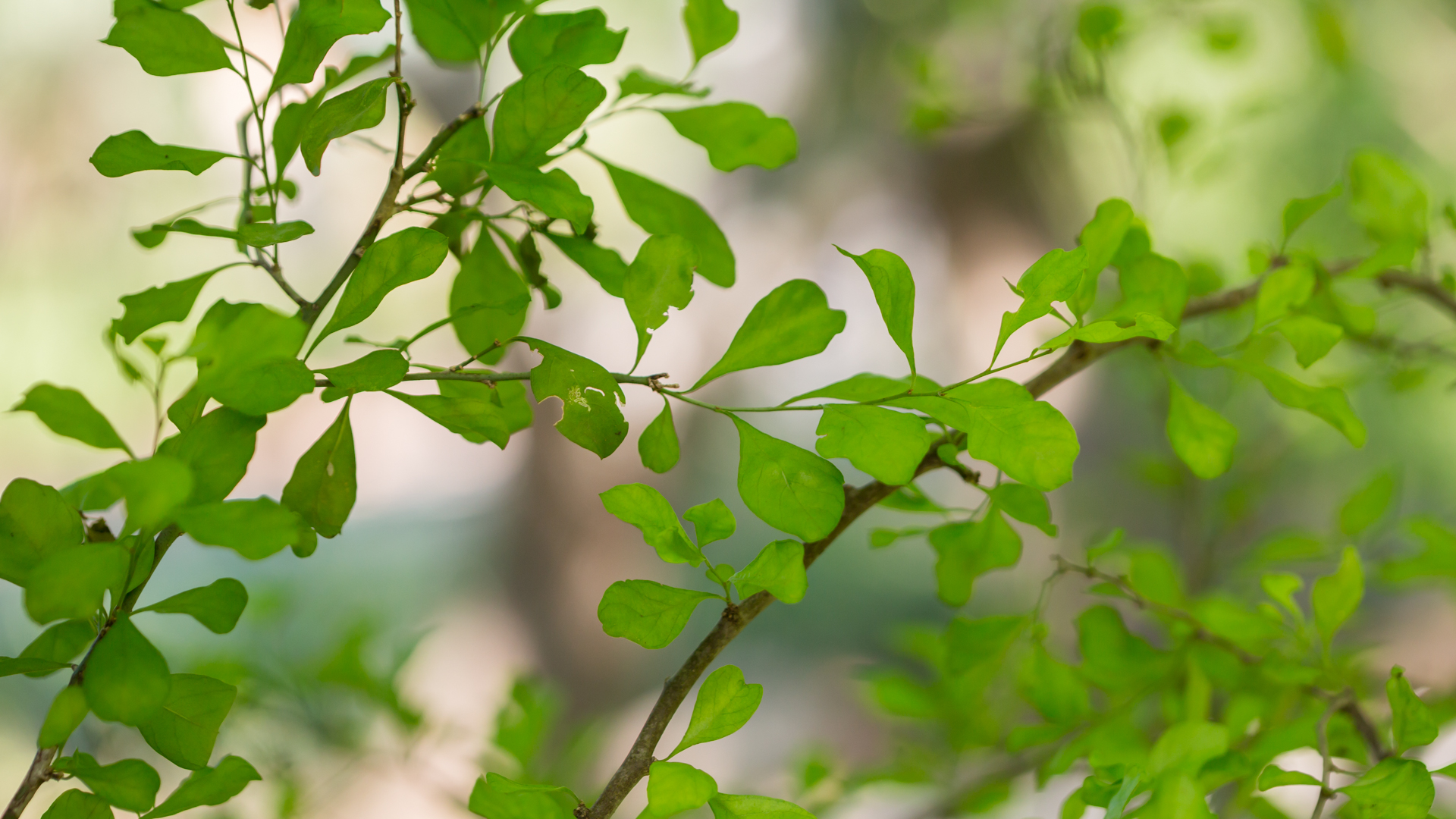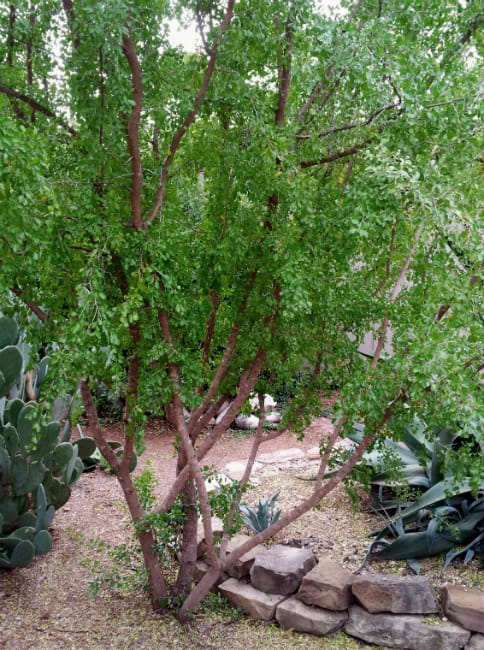Sun or shade. A nearly evergreen small tree with glowing lime-green foliage. The name is a Spanish reference to charcoal, for the dark greyish-black bark and reddish twigs. Flowers and fruits appear year-round.
Bluewood is common and thicket-forming in native understory, providing the sort of dense cover that provides great habitat and nesting opportunities for urban wildlife. It is often removed by builders and subjected to endless brush sculpture, but with minimal training in a sunny setting, it forms a distinctive small ornamental.
Stiff thorns require careful handling. To prune, focus on minimizing dead, damaged, or rubbing branches. Cuts should only be made at a bud or branch; as with any tree, remove no more than 25% of the total canopy during any five-year cycle. To maintain a healthy specimen, leave the upper 2/3 of the tree’s height uncut, and never remove more than the lowest third of the tree in a single pruning period — for example, on a 12-foot tree, stick to the lowest 4 feet.


